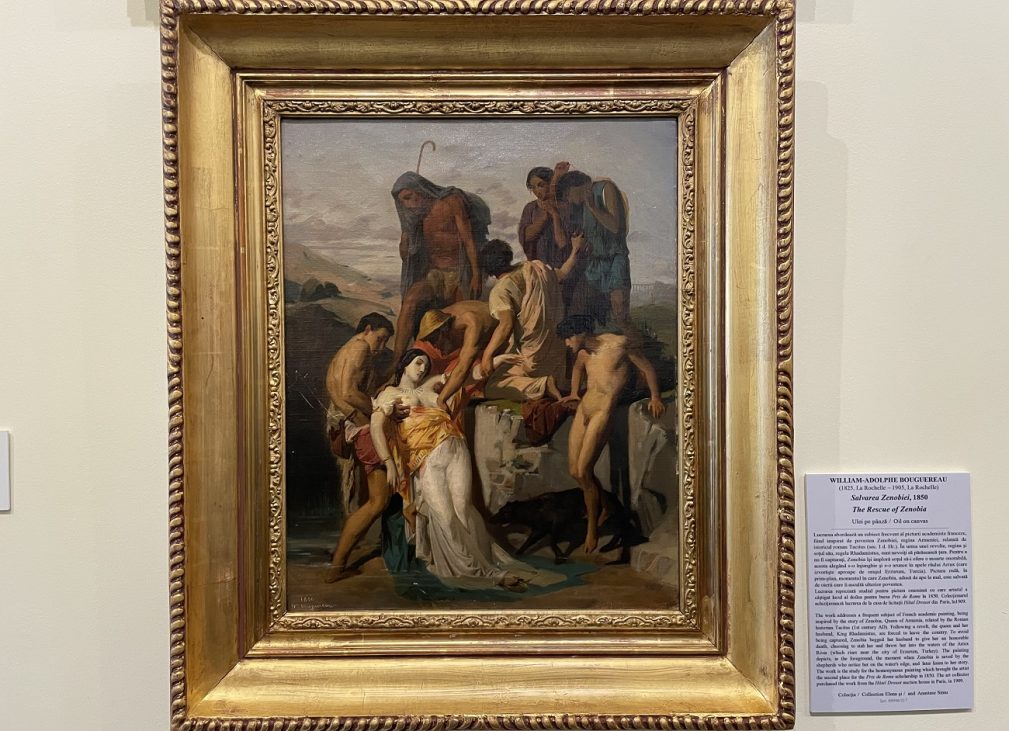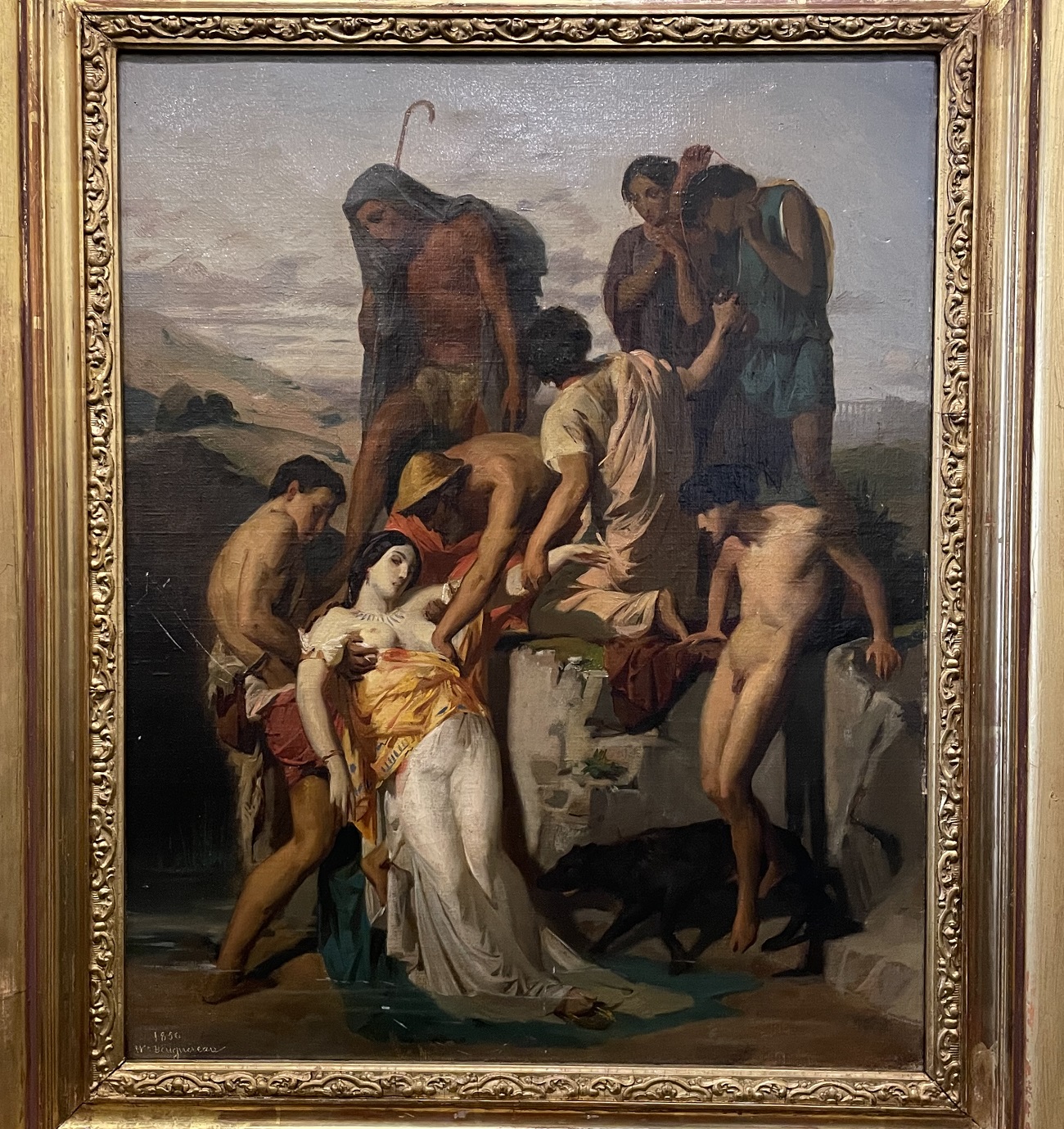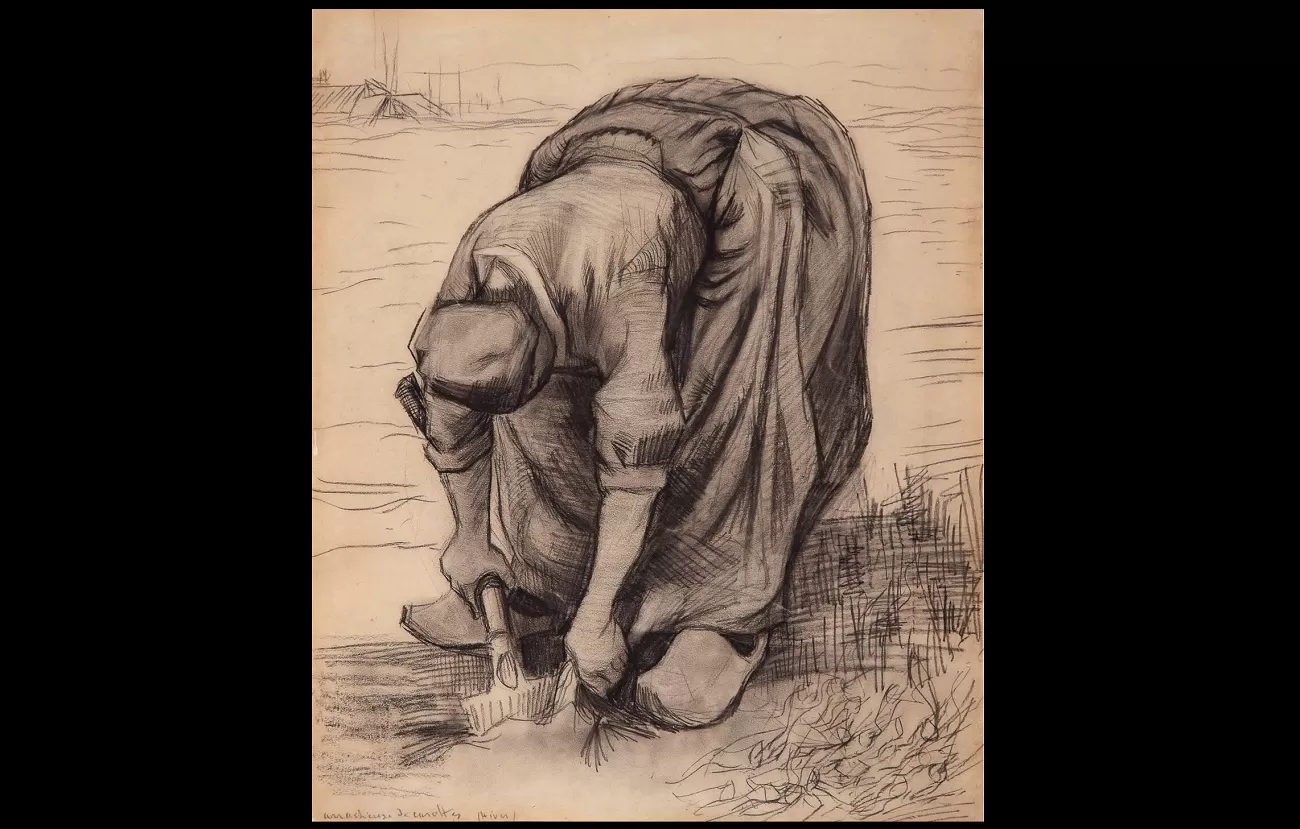
Zenobia, by Bouguereau – The story of a painting from Romania’s first art museum
“The Rescue of Zenobia” by William Bouguereau, French artist born two centuries ago, is part of the Elena and Anastase Simu Collection and is on permanent display at the Museum of Art Collections in Bucharest.
The work has been presented in the Simu Museum since its opening in 1910 in the section dedicated to French painting. In the museum catalogue of 1910, it was presented as a sketch of the winning work of the Prix de Rome, organized by the École de Beaux Arts in Paris, 1850 edition, and was purchased from a prestigious Parisian auction house.
When it was established, the Simu Museum was the first art museum in Romania organized according to the European museum criteria of the early 20th century. It presented the main European artistic schools, offering a journey through the history of art, with an emphasis on the educational role of the visual arts.
The museum was founded on the private initiative of the lawyer, diplomat and politician Anastase Simu (1854-1935), together with his wife Elena (b. Dumba), and was inaugurated on May 21, 1910.
The art historian Alexandru Tzigara-Samurcaș, founder of the Museum of the Romanian Peasant, pointed out the difference between Simu’s initiative and that of ordinary collectors, noting that he disregarded personal preferences and systematically organized the museum collection.
Later, the museum’s collection was donated to the Romanian state in 1927, and in his will Simu donated his entire estate, the acquisitions made after the 1927 donation and the Simu’s house, which became the Simu House-Museum in 1935. The two museum institutions were demolished in the context of the reorganization of Gh. Magheru.
Since 1950, the work was housed in the Universal Gallery (now the European Art Gallery) of the Art Museum of the People’s Republic of Romania (now MNAR), and with the establishment of the Art Collections Museum, it was moved in 1979 to the 664 works that today make up the Simu Collection.
Oil on canvas bought for 305 francs
On May 19, 1909, Anastase Simu was in Paris and, among other things, was planning to buy art at a Rosenberg auction at Hôtel Drouot, home to dozens of independent auction houses.
Because at the same time, in another hall, an auction of modern art was being organized, there, among other things, Simu noticed the painting depicting the Iberian princess who became the queen of Armenia. The work was based on Bouguereau’s sketches made in the context of the Prix de Rome – for which ten artists were selected after several rounds of a competition lasting more than two months. Bouguereau entered the competition for the third time in 1850. The winners were offered a three-year scholarship to study in Rome, considered then the capital of art.
The story of the queen is told in the 1st century AD by the Roman historian Tacitus. Following a revolt, Zenobia and her husband, King Rhadamistus, were forced to leave the kingdom. To avoid capture, she asks her husband to offer her an honorable death – he chooses to stab her and throw her into the waters of the river Arrax, which rises near the Turkish city of Erzurum. The painting depicts Zenobia, washed ashore, being rescued by the sheep herders who then listen to her story. This scene is frequently depicted in French academic painting.
Anastase Simu, who had done a lot of research on art, realized that it was a sketch of Bouguereau’s winning work and that it was a valuable painting, and paid a modest price of 305 francs for the work, then entitled “Romantic Scene”. The average artist’s sum. The work came from the collection of M. Th. Bonjean, a dealer and art expert, who had recently died.

Saving Zenobia, by William Bouguereau; Art Collections Museum; curatorial
The only fully signed and dated version
This painting was the first work sold by Bouguereau that year, explains Dr. Ilinca Damian, curator at the Collections Museum.
Three versions of this work exist in the world today. The one in Bucharest is said to have been made by the painter for commercial purposes. It was the only one to be offered for sale. One version is in the Beaux Arts in Paris (bought in 1884; unsigned; 32x24cm) and another in the Musée d’Orsay (bought in 2015; plain signed; previously in the collection of Bouguereau’s teacher Francois-Edouard Picot).
The Bucharest version is larger than the others, 40x32cm. The characters are more sharper, the colors deeper. “Ours, being larger, is even more likely to have been made for the commercial circuit. It is the only one dated and fully signed,” emphasizes Ilinca Damian.
William Bouguereau, one of France’s last neoclassical artists, was highly regarded during his lifetime. Many of his works were bought before he completed them, and he had commissions, but after 1874 he fell into a twilight, unappreciated by the new generation of artists. However, he worked until the end of his life, and he was beginning to lose his following on the open market. Many of his works can be found in the USA, where they arrived when the collector Bonjean’s son moved after his father’s premature death.
In Europe after 1905, when he died, the artist was scarcely traded and almost forgotten.





